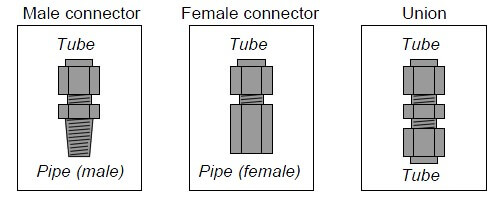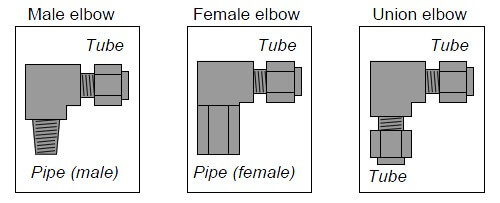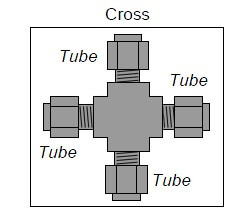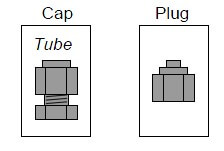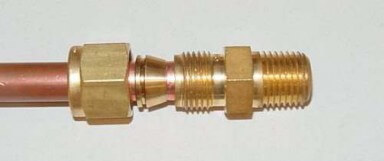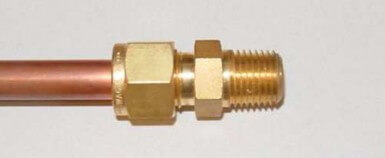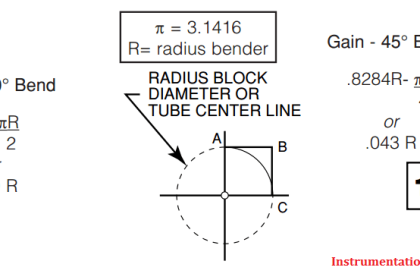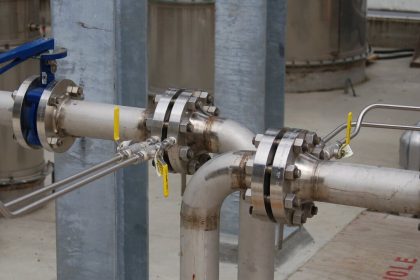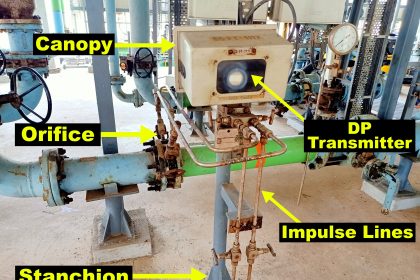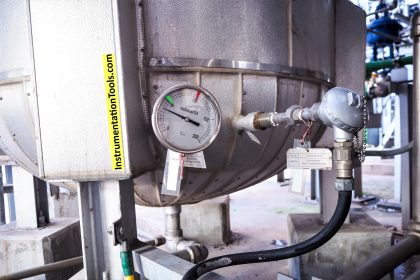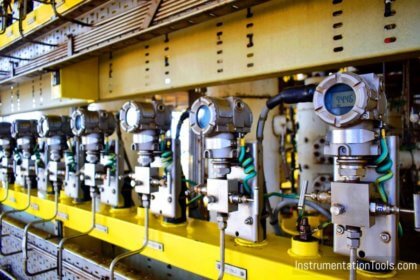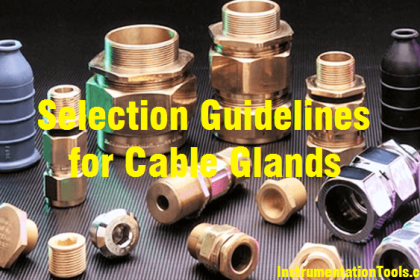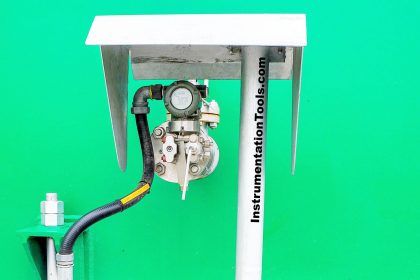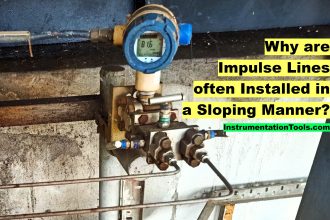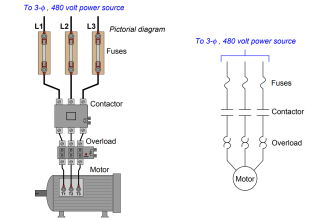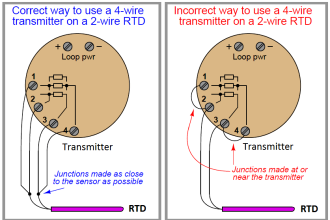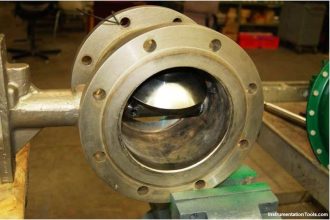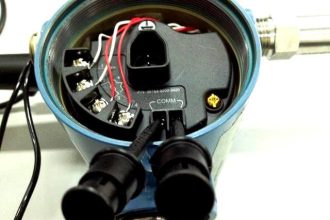Tube fittings designed to connect a tube to pipe threads are called connectors. Tube fittings designed to connect one tube to another are called unions:
If a tube union joins together different tube sizes rather than tubes of the same size, it is called a reducing union.
A variation on the theme of tube connectors and unions is the bulkhead fitting. Bulkhead fittings are designed to fit through holes drilled in panels or enclosures to provide a way for a fluid line to pass through the wall of the panel or enclosure. In essence, the only difference between a bulkhead fitting and a normal fitting is the additional length of the fitting and a special nut used to lock the fitting into place in the hole. The following illustration shows three types of bulkhead fittings:
Tubing elbows are tube connectors with a bend. These are useful for making turns in tube runs without having to bend the tubing itself. Like standard connectors, they may terminate in male pipe thread, female pipe threads, or in another tube end:
These elbows shown in the above illustration are all 90 deg, but this is not the only angle available. 45 deg elbows are also common.
Tee fittings join three fluid lines together. Tees may have one pipe end and two tube ends (branch tees and run tees), or three tube ends (union tees). The only difference between a branch tee and a run tee is the orientation of the pipe end with regard to the two tube ends:
Of course, branch and run tee fittings also come in female pipe thread versions as well. A variation of the theme of union tees is the cross, joining four tubes together:
Special tube fittings are made to terminate tube connections, so they are sealed up instead of open. A piece designed to seal off the open end of a tube fitting is called a plug, while a piece designed to seal off the end of an open tube is called a cap:
Example:
Compression tube fittings
Compression fittings are used to join a section of tube to another tube, or to a thin-walled pipe, or to a piece of equipment (such as an instrument). Compression tube fitting consists of three parts: the body, the ferrule, and the nut. Some compression fitting use a two-piece ferrule assembly, such as you can see in the diagram at the below,
Just prior to assembly, we see how the nut will cover the ferrule components and push them into the conical entrance of the fitting body:
After properly tightening the nut, the ferrule(s) will compress onto the outside circumference of the tube, slightly crimping the tube in the process and thereby locking the ferrules in place:
Note: a Swagelok brass instrument tube fitting being installed on a 3/8 inch copper tube.
Article Source: InstrEng
